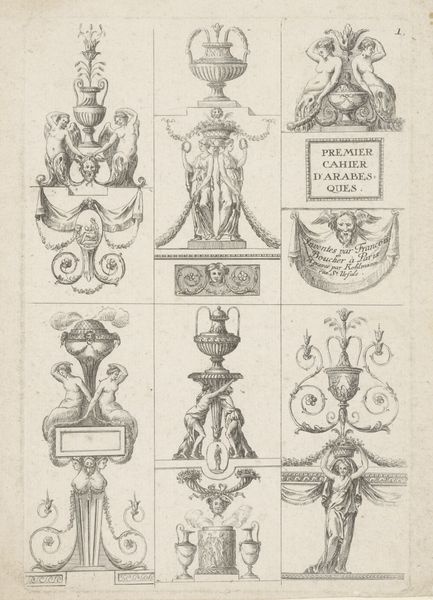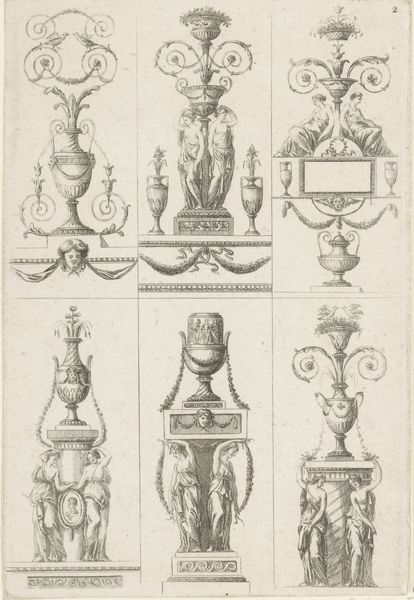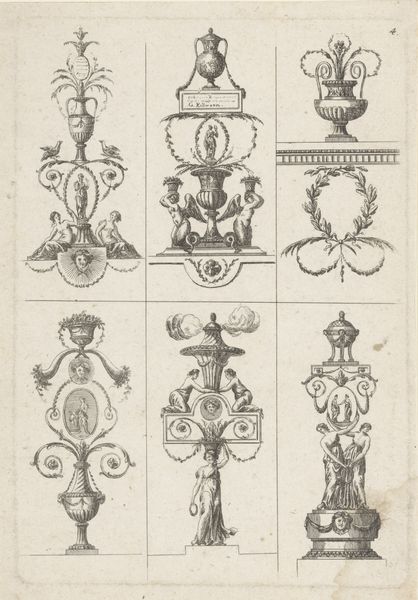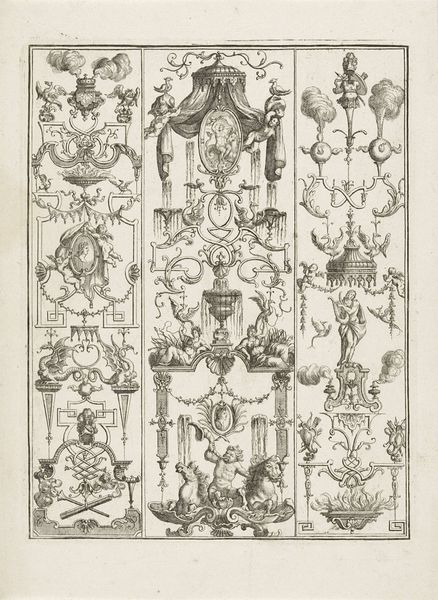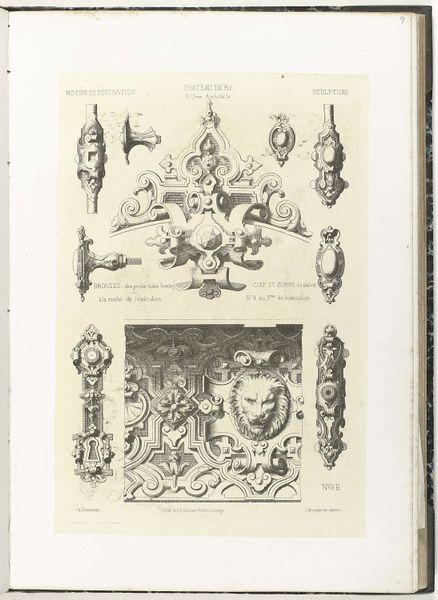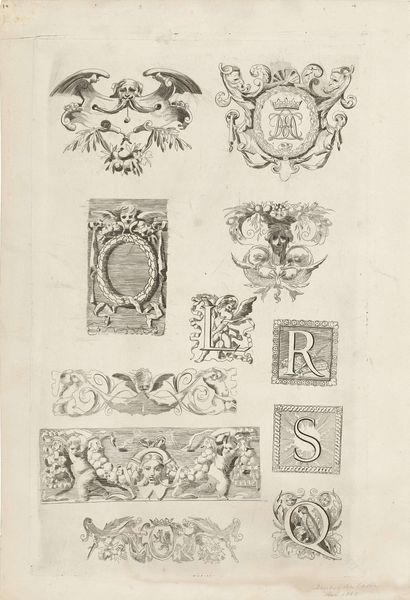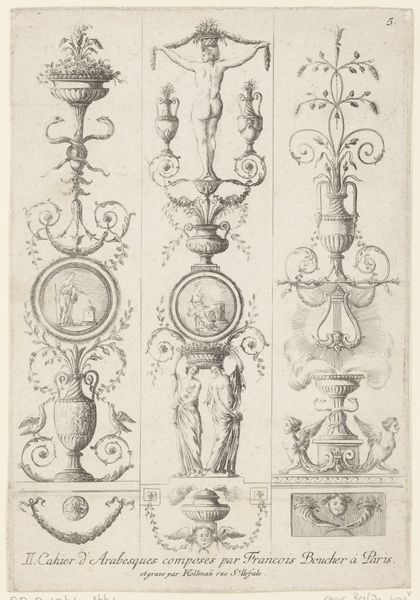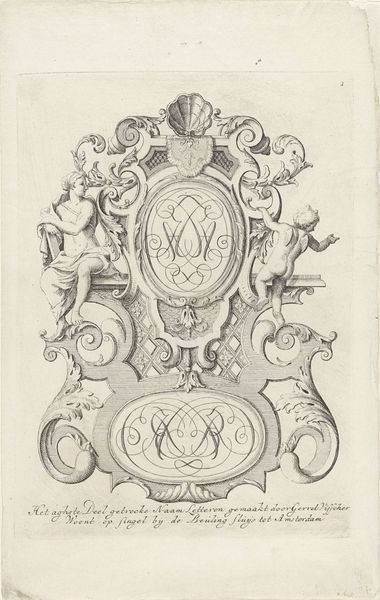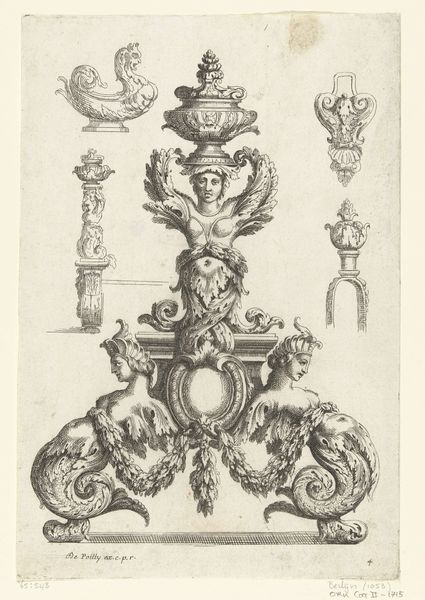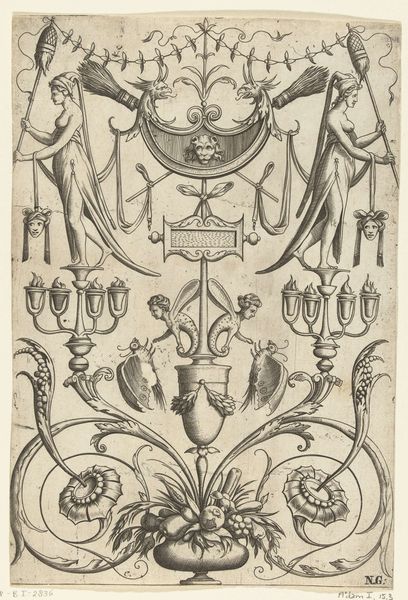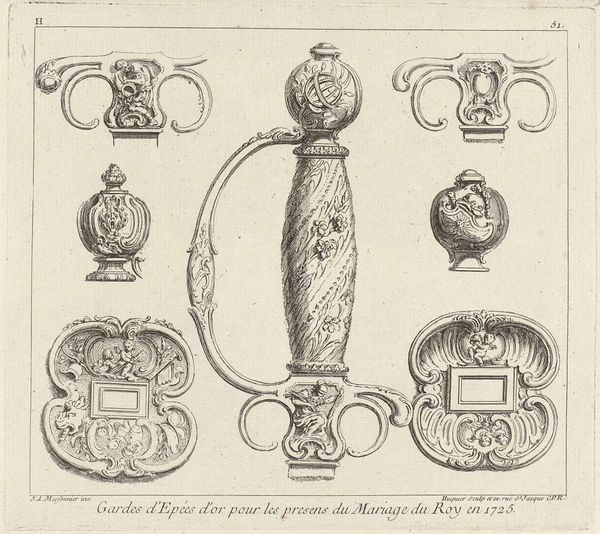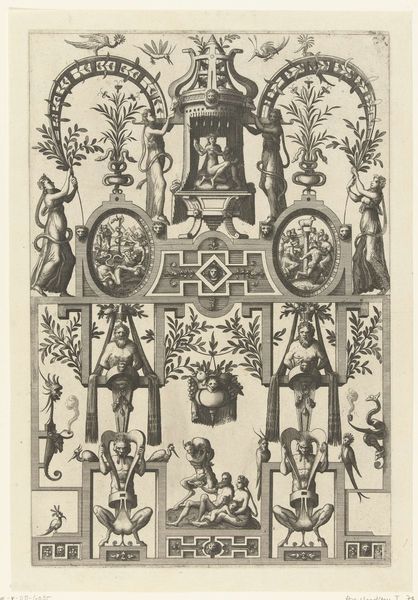
Dimensions: height 230 mm, width 160 mm
Copyright: Rijks Museum: Open Domain
This print, "Six Scenes with Arabesques," was created by Kollmann in the 18th century. It is an etching, a process by which lines are incised into a metal plate with acid, then inked and printed. The material reality of this print is critical to understanding its purpose. Kollmann was not creating a work of fine art but rather a template for other artisans to follow. Each scene offers a variation on classical motifs – vases, figures, masks – arranged in symmetrical compositions. These designs could be scaled and applied to furniture, plasterwork, or any other surface. The etching process allowed for the mass production of these designs, fueling the decorative arts trades of the 1700s. The skilled labor of the engraver thus enabled further skilled labor of execution. The print is a testament to the interconnectedness of design, production, and consumption in the early modern world, blurring the lines between art, craft, and industry.
Comments
No comments
Be the first to comment and join the conversation on the ultimate creative platform.
